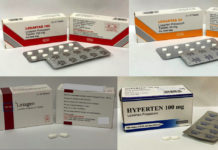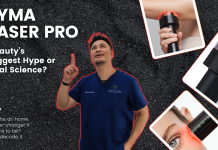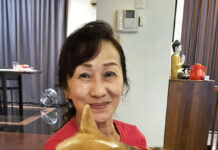For the longest time, scientists did not think that fillers did anything more than, well, fill lines up. But with increasing clinical experience, we have realised that while Hyaluronic Acid Filler injections are not permanent, they improve the skin in more ways than just plumbing it up – skin tone, texture, elasticity are all improved. Plus, after a few sessions, many find that they need less and less, and need to repeat the treatments less frequently.
These observations led to the postulation then in some way, hyaluronic acid fillers did more than “fill” – they also changed the skin in other beneficial ways.
 Our dermis, the mid layer of the skin, consists of skin cells, and an extracellular matrix (ECM) – a sort of scaffold which holds our cells together. The ECM provides strength and elasticity to skin – it is mainly made up of Type I collagen fibrils, produced by cells called Fibroblasts in the dermis. The firoblasts then bind with the collagen fibrils to provide skin elasticity, while regulating skin function.
Our dermis, the mid layer of the skin, consists of skin cells, and an extracellular matrix (ECM) – a sort of scaffold which holds our cells together. The ECM provides strength and elasticity to skin – it is mainly made up of Type I collagen fibrils, produced by cells called Fibroblasts in the dermis. The firoblasts then bind with the collagen fibrils to provide skin elasticity, while regulating skin function.
As we age, collagen fragmentation increases, causing this “scaffold” to break down. Reduced binding with fibroblasts results in their shrinkage – further reducing the collagen in the ECM.
In a study from the University of Michigan Department of Dermatology, scientists injected the skin (of the buttocks) of 21 volunteers in their 80s with a hyaluronic acid filler often used cosmetically to reduce facial wrinkles. After three months, scientists noted that the fibroblasts began expressing collagen-related genes, producing more collagen, and connecting better to the ECM. The entire layer of skin grew thicker, and more blood vessels, which nourished the cells were seen.
In other words – filling up the spaces left behind by ageing in the skin’s “scaffold” – the ECM, gave the collagen- producing cells in the skin a wake-up call, prompting them to get to work, and improve skin elasticity again!
While the study is small, this is significant because it seems to agree with what we have observed in clinical practice. It also explains why one of our popular treatments – Revitalift, works as well as it does. Revitalift is a treatment where we introduce tiny amounts of a soft, hydrating hyaluronic acid filler such as Restylane Vital, into the skin. Although the filler, being so fluid, theoretically does not plumb up wrinkles well, it does even more than that – fine lines are reduced, the skin appears more refreshed, youthful, and more radiant, pore size is minimised, and everything just… glows! And after the filler is resorbed by the body, the skin, instead of going back to its original state, in fact, remains better than before the treatment was started.
In this way – the hyaluronic acid filler has actually turned back the clock for the treated skin. It is really fascinating, and always exciting, both for my patients, and myself.
Of course, more studies need to be done, but with improving techniques and applications, the world of injectable fillers gets more exciting everyday!
References:
To make old skin cells act young again, boost their surroundings (http://www.sciencedaily.com/releases/2012/12/121210101351.htm)
Taihao Quan, Frank Wang, Yuan Shao, Laure Rittié, Wei Xia, Jeffrey S Orringer, John J Voorhees, Gary J Fisher. “Enhancing Structural Support of the Dermal Microenvironment Activates Fibroblasts, Endothelial Cells, and Keratinocytes in Aged Human Skin In Vivo.”
Journal of Investigative Dermatology, 2012 (10.1038/jid.2012.364)



















